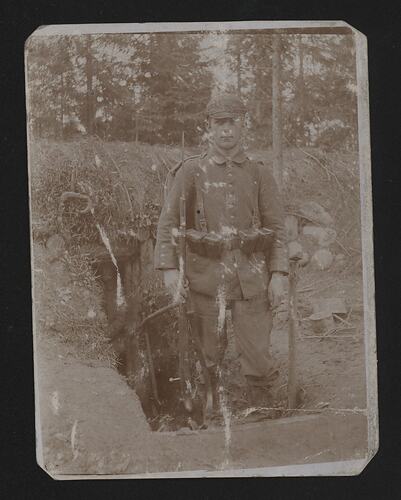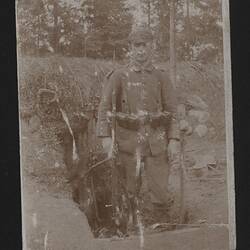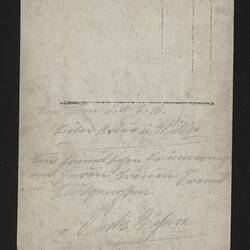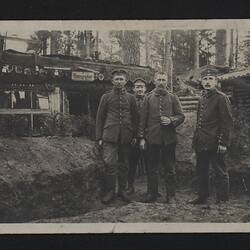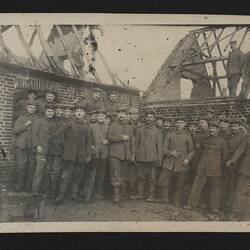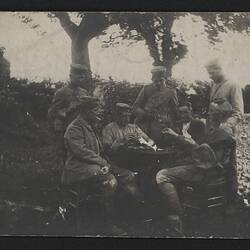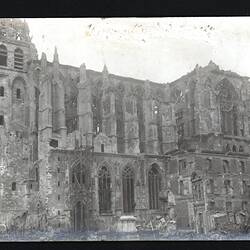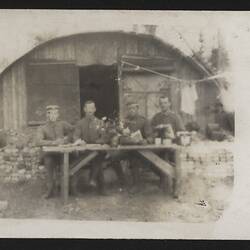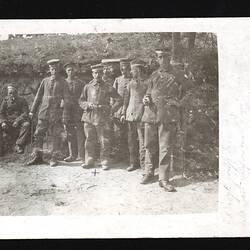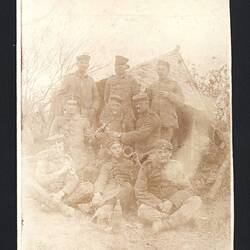Summary
Postcard depicting a German soldier at the entrance to a dugout (or similar). He wears a standard German field uniform with a covered Pickelhaube and a M/98 Mauser rifle (with bayonet). His buttons, with the Hohenzollern Crown, indicates that he is in an Prussian regiment.
The postcard is inscribed with the date July 1916. Its provenance is unknown.
Description of Content
German soldier standing in front of entrance to underground dugout (or similar), which is grassed over. He wears a German field uniform with a covered Pickelhaube and a M/98 Mauser rifle (with bayonet). Another soldier is visible standing in the entrance in the background. In the far background there are pine trees.
Physical Description
Black and white photographic print - now sepia appearance. Printed with irregular white border, trimmed at 45 degrees. Printed with lines indicative of postcard. Creasing and discolouration of image.
Significance
One of a group of photographs and postcards that document the experience of German soldiers during World War I. Although the group has no provenance, the images show a human side to soldiers of the Central Powers. Pictures by or of World War I German soldiers are relatively rare in Australian museums. These are particularly significant as they were apparently taken by German soldiers, showing them engaged in everyday activities.
The images chronicle German soldiers' wartime experience, from serving with Armeegruppe Schaffer in Romania up until the Romanian surrender in 1917. The group includes an image of a war-damaged French church/cathedral, probably taken after the Germans were moved from the Eastern to the Western front. Of particular interest is the image of celebrating German troops in Romania - documenting a victory that was to be short-lived for the Germans.
Further research - including translation of the German hand-written texts - will shed more light on the significance of these photographs and postcards.
More Information
-
Collecting Areas
-
Acquisition Information
Donation from Mr David Crotty - Museum Victoria, 30 Jun 2011
-
Place & Date Depicted
-
Other Association (See Comments)
Germany
Origin of soldiers depicted. -
Format
Postcard, 3½ in. x 4½ in., Sepia
-
Inscriptions
Pencil hand-writing: '[illegible] 4.7.16.\[rest of text illegible]\[illegible signature 'T... Bü...']'
-
Classification
-
Category
-
Discipline
-
Type of item
-
Overall Dimensions
118 mm (Width), 88 mm (Height)
-
Keywords
